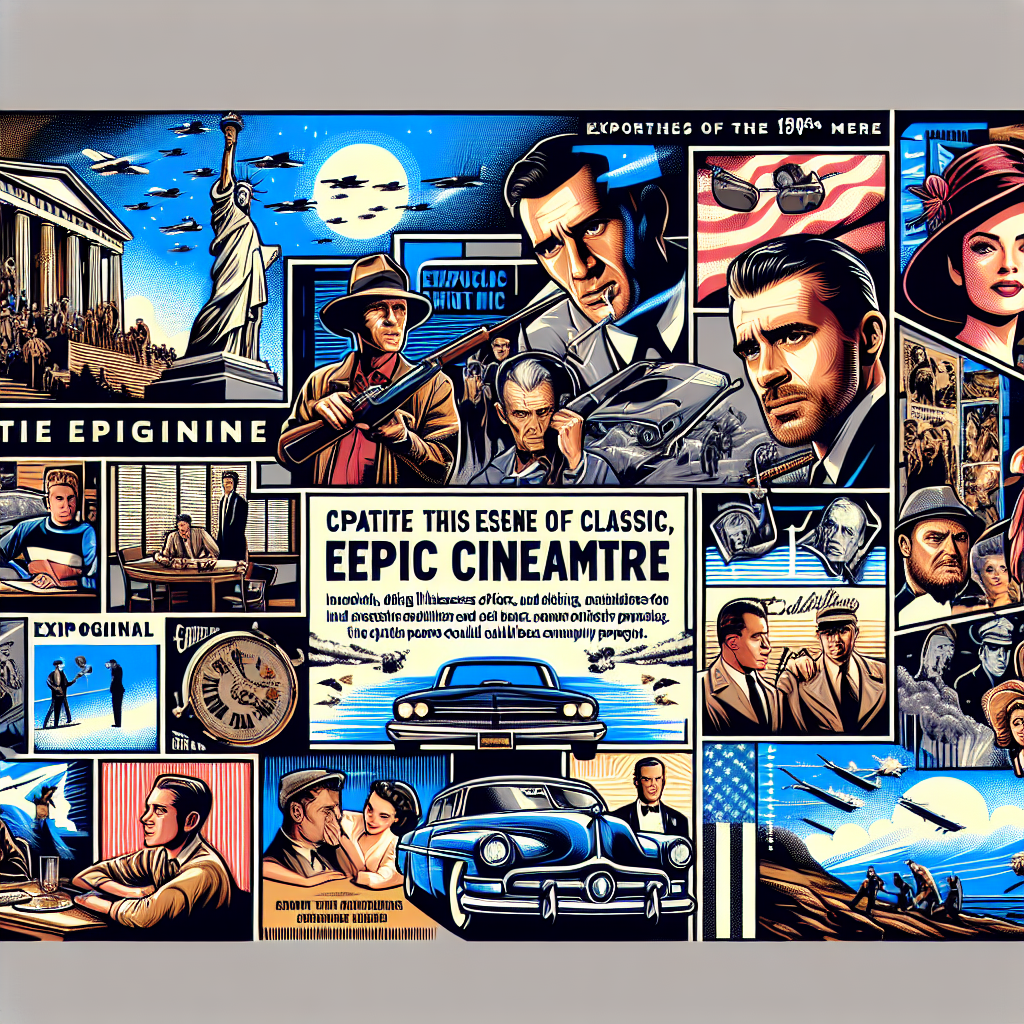Unveiling The Robe (1953): A Timeless Classic That Redefines Epic Cinema
The 1953 movie "Unveiling The Robe" stands as a paragon of epic cinema, an emblem of storytelling that traverses the spiritual and historical planes with striking finesse. Directed by Henry Koster, this film not only captures the zeitgeist of a post-World War II era searching for meaning but also redefines the narrative and technical scope of epic filmmaking. It holds a significant place in the annals of cinema history, not just for its grandeur and scale, but for its thematic profundity and the innovations it brought to the silver screen.
Significance in Cinema History
"Unveiling The Robe" epitomizes the "Biblical epic" genre that flourished in mid-20th century Hollywood. Emerging at a time when the film industry was grappling with the existential repercussions of the war and the rise of television, this movie reaffirmed cinema as a medium capable of unparalleled immersive experiences. Cinemascope, the widescreen format employed in this film, was revolutionary. The luxurious expanses of ancient Judea and Rome sprawled across screens, captivating audiences with their sheer visual splendor. This innovation not only enhanced the film’s aesthetic appeal but also cemented the widescreen format as the future of cinematic experiences.
Themes and Character Arcs
At its core, "Unveiling The Robe" explores themes of faith, redemption, and the dichotomy of human frailty versus divine intervention. The narrative revolves around Marcellus Gallio (played by Richard Burton), a Roman tribune who oversees the crucifixion of Jesus Christ and comes into possession of Christ’s robe. The robe symbolizes both a physical relic and a spiritual talisman, catalyzing Marcellus’s tumultuous journey from skepticism to profound faith.
Marcellus’s character arc is emblematic of a deeper philosophical quest. Initially depicted as a loyal but disenfranchised soldier, his exposure to the robe and the miraculous events surrounding it lead him to confront his existential disquietudes. His transformation from a hardened officer to a figure seeking redemption and spiritual fulfillment embodies the film’s central message: the possibility of spiritual rebirth and transformation.
Supporting characters, such as Diana (Jean Simmons), Marcellus’s betrothed, and Demetrius (Victor Mature), his Greek slave, add layers to the narrative. Diana represents loyalty and ideological struggle as she evolves from a passive observer to a participant in Marcellus’s journey. Demetrius, on the other hand, showcases unwavering faith and serves as a moral compass, emphasizing the themes of loyalty and courage.
Cinematic Techniques and Impact
Koster’s directorial prowess is evident through his masterful use of Cinemascope. The panoramic vistas and meticulously choreographed crowd scenes underscore the sheer scale of the story. The framing of scenes, particularly those depicting crucifixion and moments of revelation, are both harrowing and transcendent. These visuals act as metaphors, illustrating the sweeping emotional and spiritual landscapes the characters navigate.
The use of color in "Unveiling The Robe" is particularly noteworthy. The vibrant hues of Roman opulence contrast starkly with the austere tones of early Christianity, visually narrating the clash and eventual reconciliation of these two worlds. The film’s score, composed by Alfred Newman, further augments its emotional resonance. Newman’s orchestration imbues scenes with a gravitas and poignancy, turning moments of silence and reflection into profound narrative beats.
Cultural, Social, and Historical Reflection
"Unveiling The Robe" is a product of its time, reflecting the cultural and social dynamics of the 1950s. Post-war America was characterized by a renewed interest in spiritual and religious themes, seeking to reclaim a sense of moral certainty in a world scarred by conflict. The film’s depiction of conversion and redemption resonated deeply with contemporary audiences, mirroring their own desires for personal and societal healing.
Historically, the film also tapped into Cold War anxieties. The clash between the oppressive Roman regime and the nascent Christian faith can be read as an allegory for the ideological battle between totalitarianism and democracy. In this light, Marcellus’s journey becomes symbolic of the broader human struggle for freedom, dignity, and spiritual emancipation.
Legacy and Influence
The legacy of "Unveiling The Robe" extends far beyond its initial release. It set a precedent for grand-scale Biblical epics, paving the way for films like "Ben-Hur" (1959) and "The Ten Commandments" (1956). Its technical innovations influenced the adoption of widescreen formats, enriching the visual language of cinema. The film also demonstrated the viability of religious themes in mainstream films, encouraging Hollywood to explore diverse narratives rooted in spiritual and historical contexts.
Culturally, the film has endured as a touchstone for discussions on faith and redemption. Its portrayal of transformative journeys continues to inspire audiences and filmmakers alike. The film’s commitment to visual and narrative grandiosity has become a benchmark for epic storytelling in cinema.
Reflective Questions and Takeaways
As we revisit "Unveiling The Robe" today, several reflective questions emerge: How do the themes of faith and redemption resonate in our current sociopolitical climate? Can we draw parallels between Marcellus’s personal transformation and the societal shifts we witness today? What does the film’s portrayal of ideological and spiritual conflict teach us about the enduring human spirit?
Ultimately, "Unveiling The Robe" invites us to ponder the timeless struggle between doubt and belief, oppression and freedom, and the search for meaning amidst chaos. Its relevance endures, reminding us that while contexts may change, the fundamental human quest for purpose and redemption remains a constant. This timeless classic not only redefined epic cinema but also continues to illuminate the pathways to understanding our own lives and beliefs.
Got more questions? Our personalized Movies Explorer AI assistant is here to help. Click here to start a conversation!
[Advertisement]
Looking for deeper meaning in your favorite movies? Discover how ANY movie relates to positive biblical principles with Movies and Scripture GPT from BGodInspired.com. Click here to explore insights you might not have realized! . Simply key in any movie and let it show you insights you might not have realized otherwise!
[Advertisement]

